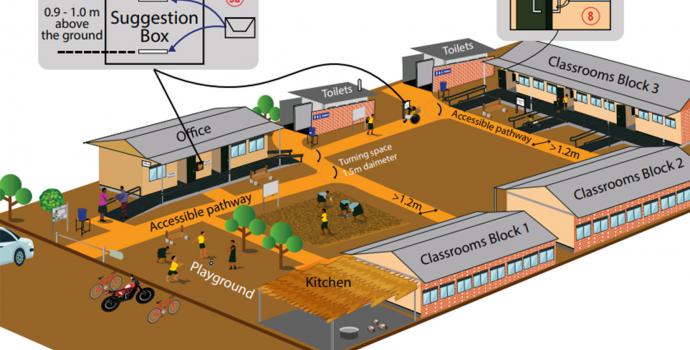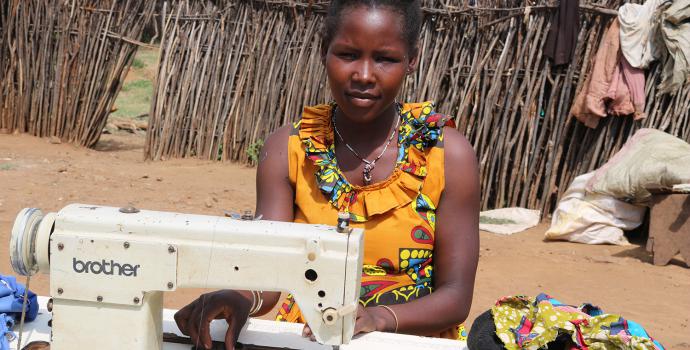One girl every minute is at risk of child marriage in Uganda, warns Save the Children

Child marriage threatens to destroy the future of a generation of Ugandan children, a new youth-led briefing paper reveals. Across the country, one girl is at risk of child marriage every minute* with nearly half of girls married before they turn 18[i]. In parts of Northern Uganda a shocking 68 percent of girls are married before they are adults[ii].
The briefing paper, Let children be children: The case for ending child marriage in Northern Uganda, was compiled by youth advocacy groups in Amuru, Gulu and Nwoya districts, with support from Save the Children. The youth are launching a new campaign to end child marriage once and for all.
Through community consultations and interviews with local leaders, schools, local NGOs, health centres, cultural and religious leaders, the groups ranked child marriage as the most critical issue facing youth in the region, followed by school dropout, unemployment, gender based violence and alcoholism.
Although the legal age for marriage in Uganda is 18, child marriage still persists on a massive scale. National statistics show at least one in 10 girls are married by the age of 15[i] and 40 percent by age 18. One in four teenage girls over 15 have already given birth or are pregnant[ii].
The rates of child marriage in Uganda are the second worst in the East African Community, with only South Sudan doing worse.
High rates of poverty, lack of education and traditional social beliefs all drive child marriage in Northern Uganda, according to the youth groups.
Brechtje van Lith, Save the Children’s Country Director in Uganda, said: “Child marriage is a form of child abuse. It forces children out of education, traps them in a cycle of poverty, and endangers the lives of young mothers and their babies. It is clear from the youth report that we need to address child marriage as both a cause and effect of violence against children. We must work together to end it once and for all.”
In just one of the primary schools the youth groups visited in Gulu district, three girls aged 14-16 dropped out in the most recent term because they were pregnant and the schools were reluctant to let pregnant girls or young mothers into class. Less than half of girls in the greater north can read and write, and only one in eight children have completed primary school[iii].
The youth groups found that other drivers of child marriage in the region include child labour, with children from poor families working in quarries or large agricultural farms which exploit cheap labour and expose the children to demands and sexual abuse from older workers.
Nancy, from Nwoya district, left school at 15 as her parents couldn’t afford to send her. At a local market she met a man in his 30s who got her pregnant, married her, then left her with two children to support. She says, “Child marriage is mostly about poverty, and the lack of jobs and opportunities. I was out of school and didn’t have anything to look forward to. I thought if I was with him, maybe I could find a better life. But I didn’t find it.”
A recent Save the Children global briefing, Working Together to End Child Marriage, found that at least one million child marriages in Uganda could be prevented by 2030 if all girls finished secondary school.
Ending child marriage would also bring huge economic benefits to Uganda. According to the World Bank, it could boost the economy by US $2.4 billion a year and bring higher living standards to all citizens. Delaying a girl’s marriage can increase her earning by 14% as an adult.
Child marriage also puts lives at risk. Babies of teenage mothers are 60 percent more likely to die in the first 28 days of life than babies of mothers aged 20-29[iv], and are at greater risk of stunting – impaired growth due to poor nutrition. Young teenagers’ bodies are not physically ready for giving birth, so they face increased risk of pregnancy-related injuries such as obstetric fistula, as well as greater risk of depression and domestic violence.
Save the Children is running projects to support child brides and teenage mothers in Northern Uganda with education and vocational skills training.
“There are laws in place to prevent child marriage, but they need to be enforced and better disseminated in rural communities. We are calling on the government of Uganda to step up efforts to implement action plans that include full access to health, education and protection for girls, and help change community attitudes. Parents must also play their part and keep their children safe from child marriage,” said Brechtje van Lith.
The youth groups recommend that increased effort should also go towards ensuring information about laws protecting children are translated into local languages and disseminated; supporting adolescent children to join and stay in school; and ensuring budget support for efforts aimed at ending child marriage and pregnancy at national and local levels, including supporting district probation officers, local police and councils to effectively manage child abuse cases.
Notes to editors
- Save the Children is a leading international child rights organization delivering programmes through partnerships, innovation, and supporting youth voices. In Uganda, we implement programmes on education, child protection, health, child poverty and child rights governance, in both development and humanitarian contexts.
- * The figure of one girl at risk every minute is estimated based on UBOS population figures. The population of Uganda is currently 38 million, 50.8% of whom are female. Approximately 6.8% of these (1.3m) are girls aged 15-17 and 40% of that age group get married. This means approximately 525,000 girls are at risk every year.
[i] UNICEF, The State of the World’s Children 2017
[ii] Uganda Bureau of Statistics (UBOS), Uganda Demographic and Health Survey 2016, published March 2017
[iii] Uganda Bureau of Statistics (UBOS), Uganda National Household Survey 2016/2017, published September 2017
[iv] UNICEF, Maternal and Newborn Health Disparities: Uganda, January 2018




